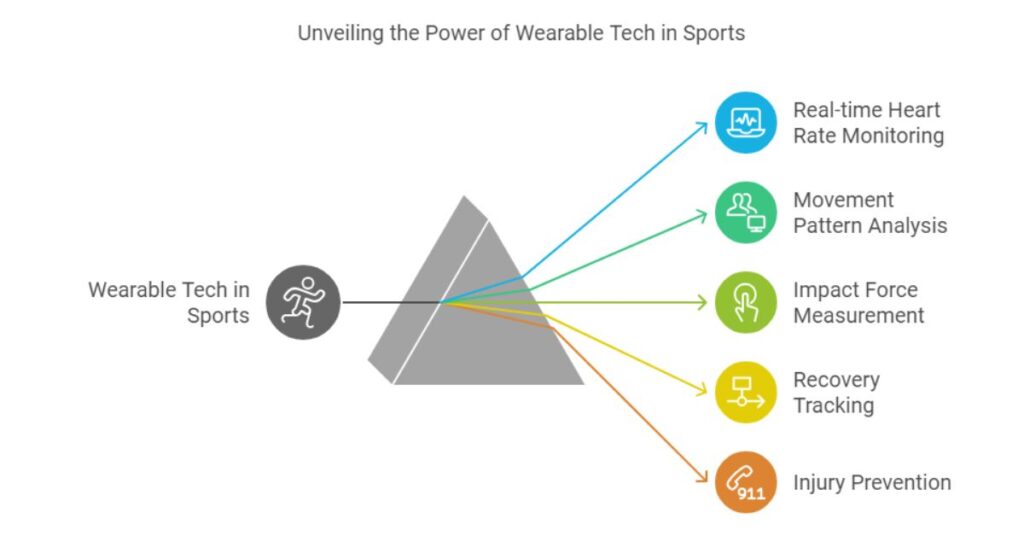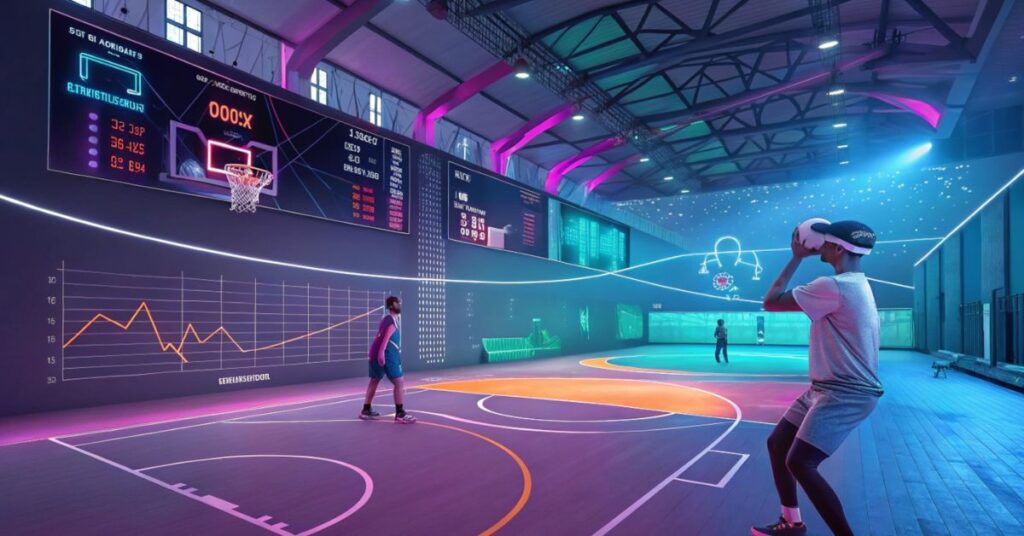The sound of squeaking shoes on the court might still be the same, but almost everything else about indoor sports has undergone a dramatic transformation. The impact of technology on indoor sports is evident in innovations like smart courts that track every movement and virtual reality training sessions, revolutionizing how we play, train, and experience these activities.
The Digital Revolution in Indoor Athletics
Remember the days when a simple scoreboard was considered high-tech? I recently visited a local indoor sports complex and barely recognized the place. The basketball court now looks like something out of a sci-fi movie, with LED lines that change color based on different sports configurations, and screens displaying real-time player statistics. It’s clear that we’re witnessing a technological renaissance in indoor sports, and it’s changing everything from how athletes train to how fans experience the game.
Current Technologies Transforming Indoor Sports
Smart Surfaces: The Foundation of Modern Indoor Sports
The ground beneath athletes’ feet isn’t just a surface anymore – it’s become an intelligent platform. According to recent innovations in sports surfaces, smart floors can now:
- Adjust cushioning levels automatically based on the sport being played
- Monitor and analyze player movements and positioning
- Change court markings instantly for different sports
- Provide real-time feedback on player performance
Wearable Technology: The Athlete’s Silent Coach

The integration of wearable tech has revolutionized how athletes train and perform. These devices aren’t just fancy gadgets – they’re becoming essential tools for peak performance.
Key Benefits of Wearables in Indoor Sports:
- Real-time heart rate monitoring and fatigue assessment
- Movement pattern analysis
- Impact force measurement
- Recovery tracking
- Injury prevention alerts
Virtual Reality: Transforming Training and Fan Experience
One of the most exciting developments I’ve witnessed is the integration of VR technology in indoor sports. Recent studies show that VR training can improve:
- Decision-making speed by up to 20%
- Tactical awareness
- Reaction times
- Mental preparation
Smart Facilities: The Evolution of Indoor Venues
Modern indoor sports facilities are becoming increasingly sophisticated. According to experts in sports facility design, today’s venues feature:
| Technology | Purpose | Impact |
| LED Lighting Systems | Adaptive illumination | Enhanced visibility and energy efficiency |
| Climate Control AI | Environment optimization | Perfect playing conditions |
| Smart Ventilation | Air quality management | Better athlete performance |
| Digital Wayfinding | Navigation assistance | Improved spectator experience |
The Future of Indoor Sports Technology
Looking ahead, several emerging technologies are set to reshape indoor sports even further:
Artificial Intelligence and Machine Learning
- Automated coaching assistance
- Predictive injury prevention
- Performance optimization algorithms
Advanced Biomechanical Analysis
- 3D motion capture
- Real-time technique correction
- Personalized training programs
Augmented Reality for Spectators
- Interactive viewing experiences
- Real-time statistics overlay
- Multiple viewing angles
Impact on Different Stakeholders
For Athletes
- Enhanced training efficiency
- Better performance tracking
- Reduced injury risks
- More personalized development plans
For Coaches
- Data-driven decision making
- Better player monitoring
- Enhanced communication tools
- Improved tactical analysis
For Facility Managers
- Optimized resource utilization
- Better maintenance scheduling
- Enhanced user experience
- Increased revenue opportunities
Addressing Common Concerns
As with any technological revolution, there are valid concerns to address:
- Cost Implications
- Initial investment requirements
- Maintenance expenses
- Return on investment considerations
- Learning Curve
- Training requirements for staff
- Adaptation period for athletes
- Integration with existing systems
- Privacy and Data Security
- Player data protection
- Secure storage solutions
- Ethical usage guidelines
The Road Ahead
The future of indoor sports technology is bright but balanced. While industry trends suggest continued technological advancement, the focus remains on enhancing rather than replacing the fundamental aspects of sports.
Key Takeaways:
- Technology is enhancing, not replacing, traditional sports elements
- Integration of digital solutions is becoming more seamless
- Focus on user experience remains paramount
- Sustainability and efficiency are driving innovation
Conclusion on the Impact of Technology on Indoor Sports
As we look to the future, it’s clear that technology will continue to revolutionize indoor sports. The key lies in embracing these advancements while maintaining the essential spirit of athletics. Whether you’re an athlete, coach, facility manager, or sports enthusiast, staying informed about these technological trends is crucial for remaining competitive and relevant in the evolving world of indoor sports.
Ready to experience the future of indoor sports? Contact your local sports facility to learn about their latest technological implementations, or share your experiences with emerging sports technologies in the comments below.
FAQs on the Impact of Technology on Indoor Sports
What technologies are currently transforming indoor sports?
Technologies such as smart surfaces, wearable devices, virtual reality training, and advanced analytics are revolutionizing how athletes train, compete, and engage with their sport.
How do smart surfaces enhance indoor sports?
Smart surfaces can monitor player movements, adjust cushioning for different sports, and provide real-time feedback on performance, improving training efficiency and safety.
What are the benefits of wearable technology for athletes?
Wearables offer real-time monitoring of vital statistics, movement analysis, injury prevention alerts, and recovery tracking, helping athletes optimize their performance.
How is virtual reality being used in indoor sports training?
VR technology provides immersive training experiences that enhance decision-making speed, tactical awareness, and mental preparation without the need for physical space.
What advancements are being made in indoor sports facilities?
Modern facilities are incorporating LED lighting systems, climate control AI, smart ventilation for air quality management, and digital wayfinding to enhance the experience for both athletes and spectators.
What future technologies could further impact indoor sports?
Emerging technologies such as artificial intelligence for automated coaching, advanced biomechanical analysis for technique correction, and augmented reality for interactive spectator experiences are set to shape the future of indoor sports.
How do these technological advancements affect different stakeholders in indoor sports?
Athletes benefit from enhanced training and performance tracking; coaches gain data-driven insights for better decision-making; facility managers enjoy optimized resource utilization and improved user experiences.
What are some concerns related to technology in indoor sports?
Common concerns include the cost of implementing new technologies, the learning curve associated with training staff and athletes to use these technologies effectively, and issues surrounding privacy and data security.
How does technology improve fan engagement in indoor sports?
Technologies like interactive displays, real-time statistics overlays, and mobile apps enhance the spectator experience by providing engaging content during events.
Why is it important to balance technology with traditional aspects of sports?
While technology enhances performance and engagement, maintaining the core spirit of athletics is crucial to ensure that the essence of competition and camaraderie remains intact.






